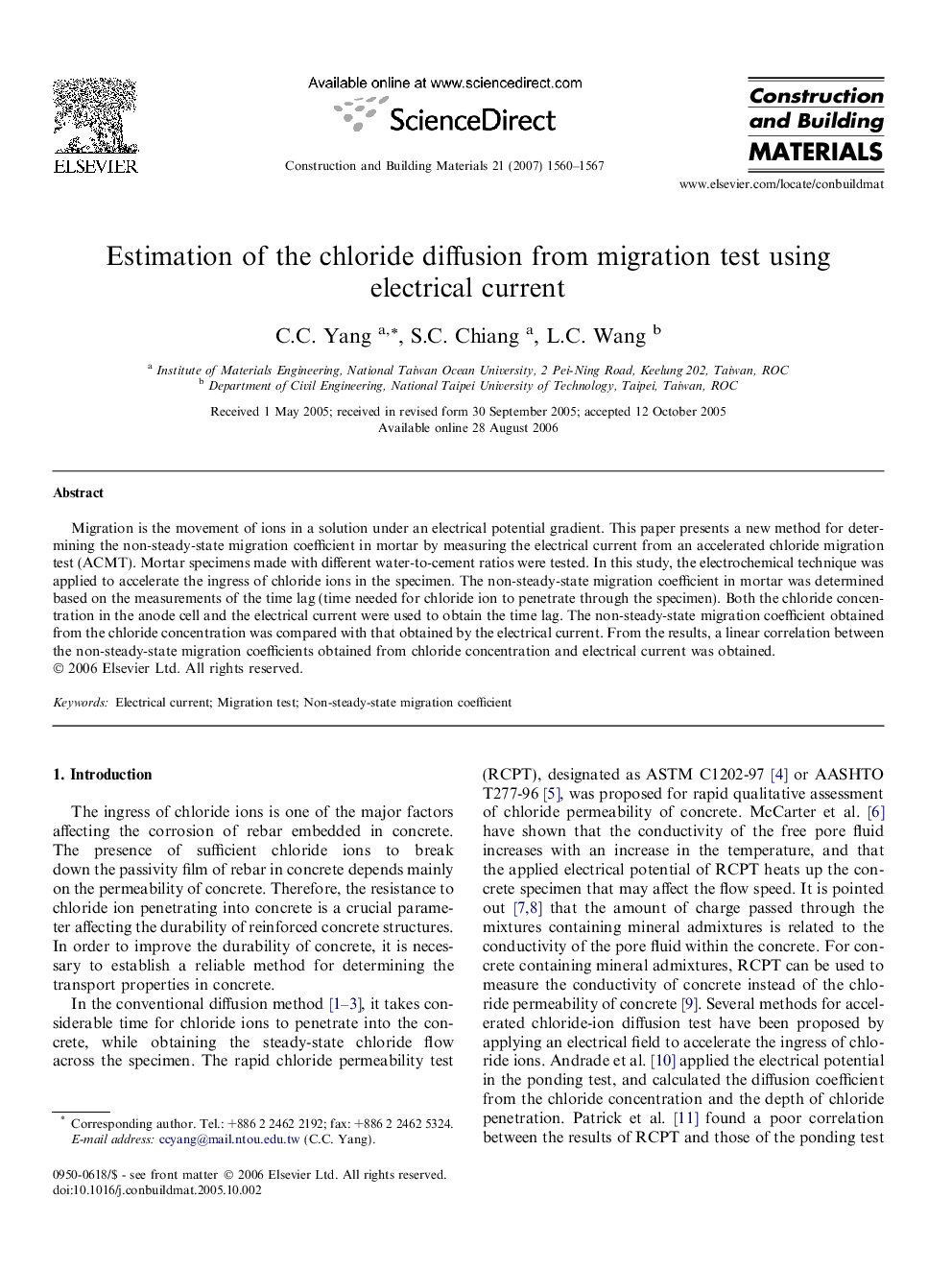| Article ID | Journal | Published Year | Pages | File Type |
|---|---|---|---|---|
| 261412 | Construction and Building Materials | 2007 | 8 Pages |
Migration is the movement of ions in a solution under an electrical potential gradient. This paper presents a new method for determining the non-steady-state migration coefficient in mortar by measuring the electrical current from an accelerated chloride migration test (ACMT). Mortar specimens made with different water-to-cement ratios were tested. In this study, the electrochemical technique was applied to accelerate the ingress of chloride ions in the specimen. The non-steady-state migration coefficient in mortar was determined based on the measurements of the time lag (time needed for chloride ion to penetrate through the specimen). Both the chloride concentration in the anode cell and the electrical current were used to obtain the time lag. The non-steady-state migration coefficient obtained from the chloride concentration was compared with that obtained by the electrical current. From the results, a linear correlation between the non-steady-state migration coefficients obtained from chloride concentration and electrical current was obtained.
